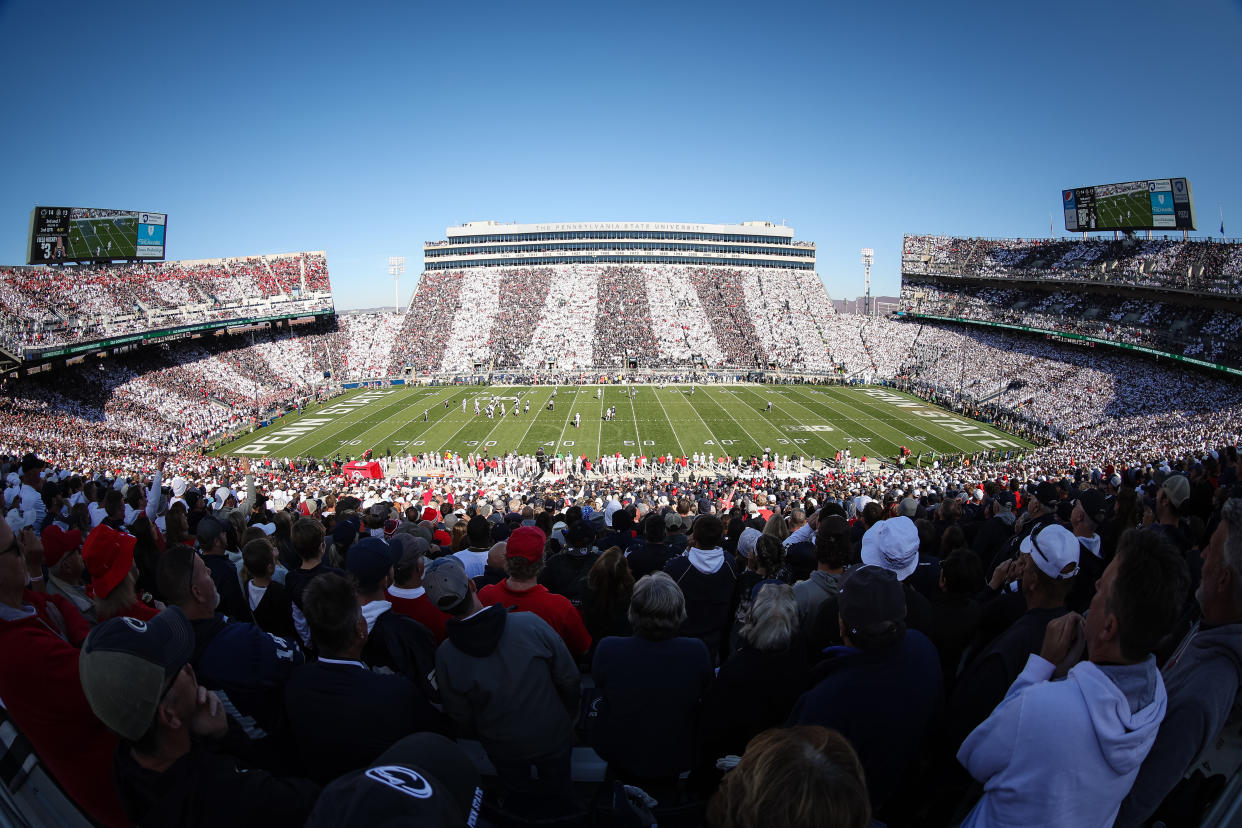Big Ten to Penn State: You have no rival
In the 30 years since Penn State entered the Big Ten Conference, it always seemed pretty obvious what the most anticipated game on the Nittany Lions schedule was.
Ohio State.
Maybe not every year, but most of them. And even though the Buckeyes have dominated the series of late by winning six consecutive and 10 of 11, the games were often hard fought, extremely close and generally dramatic — that includes three Buckeye comebacks and a double-overtime thriller.
Besides, not many teams beat Ohio State (it’s not like Michigan did any better until the past two seasons).
Whatever it was, the Buckeye game meant sold-out, six-figure crowds, often hyped-up “white outs” in State College and massive television ratings. The schools share a border, a history of excellence and plenty of familiarity, especially in recruiting.
It sure felt like a rivalry.
Apparently it wasn’t.
The Big Ten is expanding to 16 teams in 2024. The arrival of USC and UCLA, plus college football’s trend of getting rid of divisions, meant that the league needed to revamp how the schedule is made.
Its stated goal was to protect the best rivalries, essential matchups that need to be staged each year no matter how large the league gets. It came up with 11 of them.
They make sense. Indiana-Purdue, for example. Michigan-Ohio State, obviously. USC-UCLA, for sure.
Here is each of the 16 teams' protected games.
Illinois: Northwestern, Purdue
Indiana: Purdue
Iowa: Minnesota, Nebraska, Wisconsin
Maryland: Rutgers
Michigan: Michigan State, Ohio State
Michigan State: Michigan
Minnesota: Iowa, Wisconsin
Nebraska: Iowa
Northwestern: Illinois
Ohio State: Michigan
Penn State: no one
Purdue: Illinois, Indiana
Rutgers: Maryland
UCLA: USC
USC: UCLA
Wisconsin: Iowa, Minnesota
Iowa has three rivals. Michigan, Minnesota and Illinois have two.
Penn State, somehow, has none?
At least the Big Ten didn’t try to pretend the battle for the “Governor’s Victory Bell” with Minnesota was anything more than a manufactured attempt at a rivalry that almost no one knows exists. The (mostly) annual end of the season clash with Michigan State for the “Land Grant Trophy” has been competitive (PSU leads 9-8 over the past two decades) but in truth it never inspired much fervor.
Ohio State was it. That’s the rivalry. That’s the game.
Yet as is too often the case in modern college football, reasons that have nothing to do with actual fan interest get in the way.
They’ll play every other year, now. They’ll make just one trip to the other’s stadium every four years.
Or half as often as Rutgers and Maryland.

Penn State will no longer play Michigan and Ohio State every year — with each visiting in alternate seasons. This works in reverse, also. Were there a lot of Ohio State and Michigan fans seeking fewer annual circle-the-date home games with a big-name opponent?
Penn State’s Big Ten home schedule in 2025? Illinois, Minnesota, Rutgers and UCLA. That’s a kick in the shins (or bank account) for Lion fans.
College football has had to endure conference realignment, which have split up long-standing rivalries, brought in unfamiliar foes and generally decreased the collegiality of it all. It’s all about money that will be spent by administrators and coaches on fancy facilities and fatter guaranteed contracts.
The new Big Ten will require more travel and fewer traditional games. To make the expansion dollars work, some broadcasts will be shifted to pay streaming service Peacock. More late-season games will go to prime time, no matter the realities of November weather.
The burden falls on the fans.
And yet are the games better? Are the matchups more anticipated?
No, the schools just crank out the public relations campaign that convinces some fans that worse is somehow better, that easy games are preferred to challenging ones. Plenty of fans will buy it.
In the SEC, a move from an eight-game conference season to a nine-game one was blocked because too many schools blocked the move so they could set up an easier schedule filled with non-conference cupcakes. That means fewer Alabama or LSU visits and more FCS opponents.
Competitively, perhaps this is good if all you care about is maneuvering through the softest possible slate. Unfortunately, too many people like that are running the sport.
Is the Penn State decision about helping Ohio State, who gets to avoid having to play the Lions and Wolverines each season? Why care about that? The Buckeyes have been playing both for decades and the program has dominated the league because of it, not in spite of it.
This is short-sighted thinking. This is fiefdom protection.
The playoff is expanding which means losing a game isn’t the death knell it once was. Yet the schedules are somehow getting easier (or at least less exciting)?
Here in 2023, it has been declared Penn State has no rival. You're expected to believe it. And buy it.
